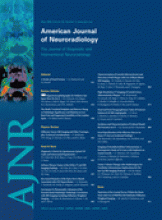The benefit of antiplatelet drugs applied before and after coil embolization of cerebral aneurysms has to be balanced against a possible increase in bleeding risks that are known from the large stroke trials. There is a high variability among centers for the use of anticoagulation and antiaggregation before, during, and after coil embolization of cerebral aneurysms, which is because of the limited scientific evidence regarding coagulation and aggregation management in neurovascular interventions.
We read with interest the results of “Effect of Antiplatelet Therapy on Thromboembolic Complications of Elective Coil Embolization of Cerebral Aneurysms.”1 In this retrospective analysis, a decrease in the rate of symptomatic thromboembolic complications was observed from 16% (4/25) of patients when no antiplatelet drugs were given to 1.9% (5/258) when antiplatelet drugs were administered before and after embolization. On the other hand, the authors identified 13 hemorrhagic complications in their cohort, 2 of which were excluded because the hemorrhages were precipitated by perforation of an arterial wall during endovascular coil treatment and, thus, not related to the antiplatelet drug. The remaining hemorrhagic complications were retroperitoneal hematoma, bleeding at the puncture site, and nasal or oral bleeding related to intubation (total, n = 11). No complications of cerebral bleeding caused by the antiaggregation itself were encountered. The authors conclude that the benefits of antiplatelet therapy seem to outweigh the risks.
Our own observations2 after prophylactic antiplatelet therapy in patients with unruptured aneurysms showed a nonsignificant trend toward fewer patients with thromboembolic incidents, whereas in patients with ruptured aneurysms, the benefit was highly significant. In line with Yamada et al,1 we observed no complications of cerebral bleeding caused by the antiaggregation, and the outcome after iatrogenic aneurysmal perforation was not different in patients without application of acetylsalicylic acid. In contrast to their findings, we did not observe complications of extracerebral bleeding. However, complications that did not affect the patients’ long-term outcome were not recorded for our analysis. In both studies, the possibility of nonresponders to antiaggregation therapy was not taken into account.
After pooling the data of Yamada et al1 with our own results,2 we found an odds ratio of 0.32 (95% confidence interval, 0.09–1.11) for the rate of thromboembolism in patients with antiaggregation therapy versus patients without. On the basis of these data, the strategy of standardized application of antiplatelet drugs seems defensible.
Nevertheless, on the basis of these pooled data, a randomized trial of 267 patients in each treatment group (antiaggregation vs placebo) would be required to test the effect of antiaggregation on the rate of thromboembolism as a surrogate end point (80% power at the 95% level of confidence), also recording adverse events that may have an effect on the clinical outcome. A randomized trial with this surrogate end point seems feasible concerning the required patient numbers. A study with a clinical end point might be the first choice, but numbers needed to treat would be unrealistically high because of the low rate of disabling events in patients after embolization of unruptured aneurysms.
We would readily join a randomized trial, but, in the meantime, we feel encouraged to use acetylsalicylic acid and clopidogrel before, during, and after aneurysmal coiling.
- Copyright © American Society of Neuroradiology












